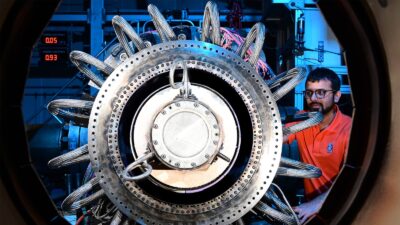In April 2020, the Centrica (LSE:CNA) share price tanked as the pandemic engendered a series of lockdowns around the world. So, if I had bought shares when they bottomed out at £30, I would have seen 423% growth to the current £157. In other words, my £1,000 investment would be worth £5,320 today. That’s an outstandingly good return.
However, the pressing question is whether it’s still a wise investment choice at present?
Business model
Centrica is a UK-based energy company serving millions of customers with gas and electricity in the UK and Ireland. It has three core business segments: Retail, which includes energy supply and related services; Optimisation, covering energy trading and power generation; and Infrastructure, encompassing energy infrastructure assets and distributed energy solutions like solar panels and battery storage.
Valuation
Despite its remarkable surge, the stock is currently trading at a six times earnings. Even for energy and cyclical companies, this is particularly low and quite appealing. On a forward basis, the energy giant appears to be trading around 4.2 times earnings. Once again, this is a very attractive valuation.
The low forward ratio has been enabled by a very strong start to the year. In H1, earnings per share rose to 25.8p from 11p, while statutory operating profit grew to £6.5bn from a £1.1bn loss.
This was partially due to exceptional items, including the impact of the end of energy price cap. As such, we can’t expect FY earnings of 50p. Instead something closer to 40p will be more realistic.
Nonetheless, these P/E ratios signify a substantial discount when compared to the FTSE 100‘s average P/E of around 13 times, possibly indicating that Centrica’s share price is undervalued.
Positive cash flow
The company’s retail business is the largest contributor to cash flow, generating around 60% of total free cash flow in 2022. The optimisation business generated around 30% of free cash flow, while the infrastructure business generated the remaining 10%.
Centrica’s cash flow is expected to remain strong in the coming years. JP Morgan estimates that the company will have around 40% of its current market capitalisation in net cash by late 2024, even after recently declared buybacks.
Liquidity is particularly important for companies working in cyclical industries. It acts as a buffer when the industry goes into a down cycle, while allowing for reinvestment and continual improvement.
This turnaround is also visible when we look at debt. At the end of 2020, the company’s net debt amounted to £3bn. However, as of the end of H1 2023, this had been transformed into a net cash position of £3bn. Moreover, decommissioning liabilities and technical pension deficits have halved to just £2bn over the period.
There are always risks when investing in cyclical stocks. Downturns and price fluctuations that hamper margins and profitability could just be round the corner. However, noting the current valuation, and FY year expectations, Centrica could still represent good value.








